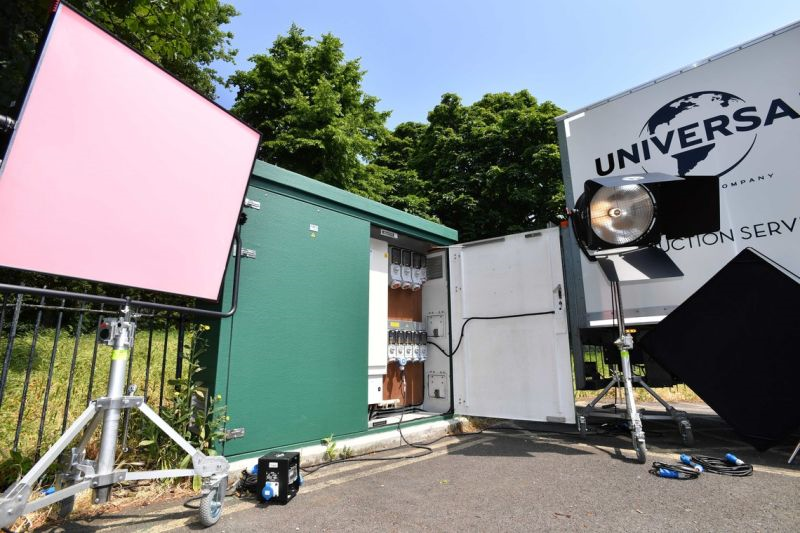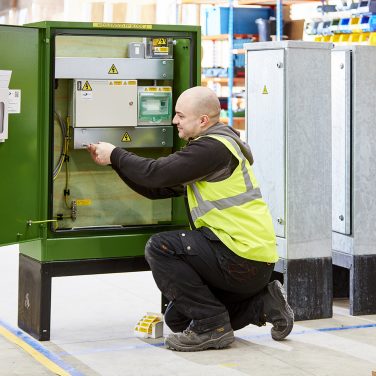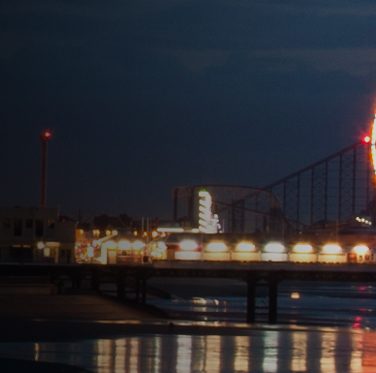Lucy Zodion’s RFID accessible feeder pillar reduces environmental impact in Tower Hamlets and London
Summary
Client: Ingenious Power Engineering
Location: London
Completed: October 2022
Products: Double door GRP pre-wired feeder pillar with an external textured stipple effect finish
Background
Film London, in collaboration with various industry leaders and organisations, has launched the Grid Project—a pioneering Pilot program aimed at providing renewable energy to film productions in the capital city. The project’s objective is to significantly reduce air pollution, CO2 emissions, and noise pollution associated with film production by installing an electrical feeder pillar, powered by 100% renewable energy.
The Pilot had several key objectives:
- Decrease air pollution caused by production generators
- Minimise CO2 emissions and their contribution to climate change
- Mitigate noise pollution in filming locations
- Inspire similar sustainable initiatives in the film industry
Solution
The Grid Project offers numerous environmental benefits by transitioning film productions to sustainable energy solutions. An analysis conducted by ARUP estimated the environmental impact of production generators in Victoria Park during 2018, revealing significant emissions and fuel consumption. The installation of electrical feeder pillars is expected to address these issues by:
- Achieving a 100% reduction in CO2 emissions and air pollutants (Particulate Matter and Nitrogen Dioxide) at the point of use
- Significantly reduce noise pollution associated with traditional diesel generators
- Contributing to the long-term improvement of air quality in filming locations
- Serving as a model for future sustainable developments in the film industry
Results
During the implementation of The Grid Project, spearheaded by Film London, we worked with Ingenious Power Engineering, to find the right solution – including providing access to the pillar via a contactless Radio Frequency Identification (RFID) reader, more commonly used in passports and pet tags, but a technology we believe will be increasingly integrated into feeder pillars due to the large number of operatives that require access. Producing lots of keys would have presented challenges, including managing the number of copies and security. We undertook 24 design iterations before reaching the approved final design.
A test case for the future
The Grid Project was used as a test case for filming locations across the country. Its success in Victoria Park paves the way for potential adoption in other regions, promoting sustainable best practise and reducing environmental impact of film production throughout the UK’s film industry.
The electrical feeder pillar allows film crew to plug in multiple pieces of mobile equipment via electrical sockets. Previously, these devices would have been connected to noisy generators, resulting in considerable noise pollution during filming, particularly in night scenes. By switching to electrical feeder pillars, the operation becomes much quieter, offering a more conducive environment for filming and reducing noise disturbances for nearby residents. Additionally, the transition to electricity as a power source significantly reduces pollution, as it is a greener and cleaner alternative to burning generator fuel.
Dominic Reeve-Tucker, Managing Director of The Film Office, expressed pride in the project’s outcome and commended the commitment of all involved in transitioning to a cleaner and more sustainable future for the film industry.


